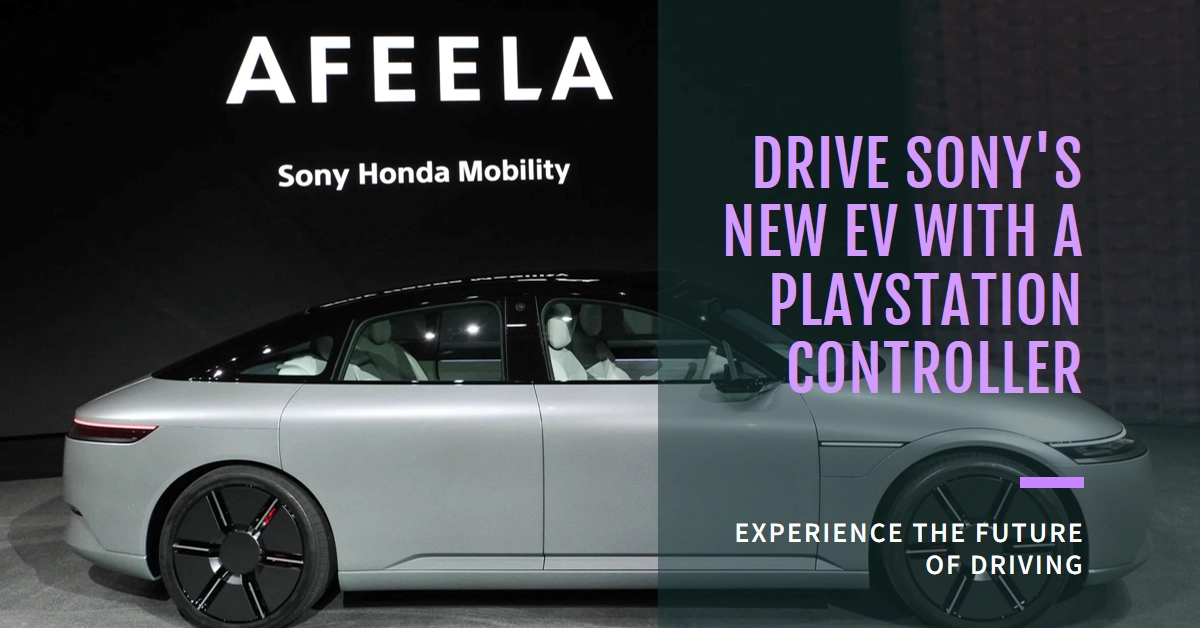The lines between virtual and reality are blurring further than ever before with Sony’s latest innovation: a concept car you can control with a familiar PlayStation DualSense controller. Unveiled at this year’s CES, this futuristic vehicle, the Afeela, isn’t just another electric car; it’s a glimpse into a future where gaming and transportation collide in mind-blowing ways.
But before you dream of drifting corners in real life, let’s unpack what exactly Sony accomplished and what it means for the future of driving.
Under the Hood: Tech Merging Worlds
The Afeela, developed in partnership with Honda, isn’t intended for immediate retail release. Rather, it serves as a showcase for Sony’s vision of “seamless experiences” across entertainment and mobility. At its core, the Afeela is an autonomous vehicle, packed with AI and sensor technology that handles the heavy lifting of driving. However, what sets it apart is the optional DualSense controller integration.
Imagine this: standing outside your sleek, minimalist Afeela, you connect your trusty DualSense. The car recognizes you, its headlights illuminating in a welcoming dance. Gripping the controller, you feel the haptic feedback vibrate through the familiar buttons and triggers.
Suddenly, the sleek dashboard display transforms into a Gran Turismo-esque interface, mirroring the virtual world onto the real. With a flick of the analog stick, you steer the Afeela forward, the adaptive triggers mimicking the resistance of a real racing wheel.
Demo Delight: A Taste of the Future
While the idea of controlling a car with a game controller might seem like child’s play, Sony’s CES demonstration proved it far from a gimmick. Honda CEO Izumi Kawanishi himself took the stage, maneuvering the Afeela onto the platform using the DualSense, showcasing an impressive level of control and responsiveness.
This wasn’t just a straight drive; Kawanishi navigated gentle curves, demonstrating the potential for a thrilling blend of virtual and real-world driving experiences.
But don’t expect to pull a Mario Kart on the freeway just yet. The DualSense control is currently envisioned as a low-speed, controlled environment feature, perhaps for parking or navigating tight spaces. This also addresses safety concerns, emphasizing the Afeela’s autonomous driving capabilities as the primary mode for everyday use.
Blurring the Lines: Implications and Opportunities
The Afeela is more than just a fancy car with a PlayStation gimmick. It represents a bold vision for the future of transportation, where entertainment and mobility intertwine in ways we can barely imagine. Imagine personalized driving experiences tailored to your favorite racing games, with immersive audio and visuals blurring the line between driving and playing.
It also opens doors for accessibility, allowing individuals with limited mobility to experience the thrill of the open road through familiar gaming interfaces.
Of course, challenges remain. Regulatory hurdles for controller-based driving need to be cleared, and concerns about potential distractions and misuse will need to be addressed. However, the Afeela represents a significant step towards a future where technology serves as a bridge between our digital and physical worlds, offering unprecedented levels of personalization and engagement.
So, buckle up, gamers! While the Afeela may not be hitting the streets overnight, it serves as a thrilling preview of the exciting possibilities that lie ahead.
One day, you might just find yourself cruising down the highway, the wind in your hair and a DualSense in your hand, feeling the rush of real-world driving blended seamlessly with the virtual world you know and love.
Disclaimer:
It’s important to note that the Afeela is still in its early stages of development, and the DualSense control feature is currently a concept demonstration. The future of this technology and its potential limitations remain to be seen.
However, its existence alone marks a fascinating turning point in the convergence of gaming and transportation, and it’s a concept worth keeping a close eye on as technology continues to evolve.
